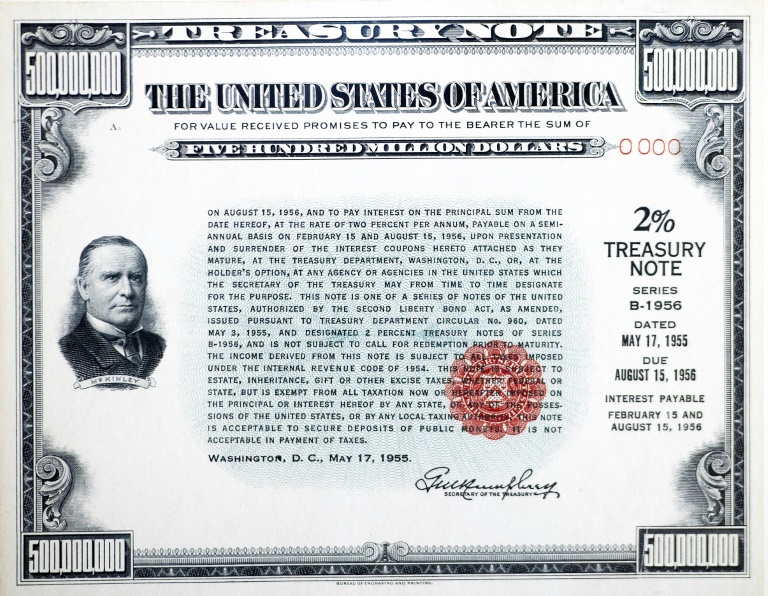In the realm of uncertainty, where chaos reigns and unpredictability thrives, there exists a concept that defies conventional wisdom. It’s the idea of antifragility, a term coined by Nassim Nicholas Taleb in his seminal work, “Antifragile: Things That Gain from Disorder.” But what exactly is antifragility, and why is it so crucial in understanding the dynamics of our world?
At its core, antifragility represents more than just resilience or robustness; it embodies a system’s ability to not only withstand shocks and volatility but to actually benefit from them. Imagine a phoenix rising from the ashes, not merely surviving the fire but thriving because of it. That’s the essence of antifragility.
To delve deeper into this concept, we must first grasp the distinction between fragility, robustness, and antifragility. Fragile systems are those that break under stress, like delicate glassware shattering upon impact. Robust systems, on the other hand, can withstand shocks without being altered, much like a solid brick wall enduring the forces of nature. However, antifragile systems go beyond mere resilience; they actively improve and grow stronger in response to stressors, akin to muscles becoming stronger through exercise.
So, what sets antifragile systems apart? It’s their inherent ability to harness disorder and volatility as opportunities for growth and adaptation. Rather than fearing uncertainty, they embrace it as a catalyst for evolution. This transformative quality lies at the heart of antifragility and holds profound implications for various domains, from economics and finance to biology and psychology.
Embracing Volatility
In the quest for stability and predictability, we often overlook the vital role that volatility plays in shaping our world. While conventional wisdom urges us to seek equilibrium and minimize risks, antifragility challenges this mindset by recognizing volatility as a fundamental driver of growth and innovation.
At the heart of antifragility lies the concept of nonlinear responses to stressors. Unlike fragile systems, which crumble under pressure, antifragile entities thrive on chaos and disruption. They possess a unique ability to capitalize on fluctuations, using them as stepping stones toward greater resilience and prosperity.
Consider financial markets, a classic example of antifragility in action. While traditional investment strategies focus on minimizing risk and preserving capital, antifragile investors recognize the potential for gain in market turbulence. Instead of fearing volatility, they embrace it as an opportunity to capitalize on mispriced assets and asymmetric payoffs.
Similarly, biological systems exhibit antifragile properties through processes like hormesis, wherein exposure to moderate stressors triggers adaptive responses that enhance resilience. For instance, muscles grow stronger with exercise, immune systems become more robust through exposure to pathogens, and forests regenerate after wildfires, thriving in the aftermath of destruction.
In the realm of ideas, antifragility manifests through the concept of “skin in the game,” a term popularized by Taleb himself. By aligning incentives with consequences, individuals and organizations can foster an environment where mistakes are not only tolerated but embraced as learning opportunities. This principle encourages experimentation and innovation, driving progress even in the face of uncertainty.
As we delve deeper into the intricacies of antifragility, it becomes clear that embracing volatility is not merely a strategy for survival but a pathway to growth and adaptation. By reframing our perspective on risk and uncertainty, we can harness the transformative power of chaos and emerge stronger, wiser, and more resilient than ever before.
Adaptive Systems and Optionality
At the core of antifragility lies a set of fundamental mechanics that enable systems to not only withstand adversity but to flourish in its presence. These mechanics, rooted in adaptability and optionality, form the building blocks of antifragile entities across various domains.
Adaptive Systems
Central to the concept of antifragility is the notion of adaptability—the ability of a system to adjust and evolve in response to changing circumstances. Unlike rigid structures that succumb to disruption, adaptive systems possess the flexibility to reconfigure themselves, leveraging new information to improve performance and resilience.
One key mechanism of adaptation is feedback loops, which allow systems to learn from experience and adjust their behavior accordingly. Whether in biological organisms, social networks, or financial markets, feedback mechanisms enable entities to fine-tune their responses to external stimuli, optimizing their strategies over time.
Another crucial aspect of adaptability is diversity. By maintaining a diverse array of components or strategies, systems can better cope with uncertainty and variability. Diversity serves as a form of insurance against catastrophic failure, ensuring that even if some elements falter, others can step in to compensate, preserving the system’s overall integrity.
Optionality
In addition to adaptability, antifragile systems rely on the principle of optionality—the ability to benefit from asymmetrical payoffs or upside opportunities while limiting downside risk. Optionality provides entities with a portfolio of potential actions or outcomes, allowing them to capitalize on favorable developments while mitigating losses in unfavorable scenarios.
One manifestation of optionality is the concept of convexity, wherein the potential gains outweigh the potential losses. In financial terms, this translates to investments with limited downside and unlimited upside—a characteristic shared by certain derivatives and entrepreneurial ventures. By embracing convex strategies, individuals and organizations can position themselves to profit from unexpected events, turning volatility to their advantage.
Another form of optionality is the preservation of “free options” or the ability to delay decisions until more information becomes available. By deferring commitments and maintaining flexibility, entities can adapt to changing circumstances without locking themselves into suboptimal courses of action.
Together, adaptability and optionality form a powerful framework for building antifragile systems that thrive in uncertain environments. By embracing change, fostering diversity, and preserving optionality, entities can navigate the complexities of our dynamic world with resilience, agility, and foresight.
Real-World Examples and Case Studies
To truly understand the concept of antifragility, it’s essential to examine how these principles manifest in real-world scenarios. From economic systems to biological organisms, examples abound of entities that harness volatility and uncertainty to their advantage, emerging stronger and more resilient in the process.
- Economic Systems: In the realm of economics, antifragility finds expression in the concept of “creative destruction,” as espoused by economist Joseph Schumpeter. Market economies thrive on innovation and entrepreneurship, wherein the failure of inefficient firms paves the way for the emergence of more adaptive and dynamic players. By allowing for the natural turnover of businesses, economies become more robust and efficient over time, benefiting from the constant churn of competition and disruption.
- Biological Organisms: Nature offers abundant examples of antifragility in action, with biological organisms exhibiting remarkable resilience and adaptability in response to changing environments. Consider the immune system, which relies on exposure to pathogens to develop immunity and resistance. By confronting challenges head-on, the immune system becomes stronger and more adept at defending against future threats—a classic example of antifragility at work.
- Technological Innovation: The field of technology provides numerous illustrations of antifragile principles in practice. Silicon Valley’s culture of experimentation and iteration encourages entrepreneurs to embrace failure as an integral part of the innovation process. Start-ups pivot in response to feedback, adapting their products and strategies to better meet market demands. Through this iterative approach, technology companies not only survive in the face of uncertainty but thrive, driving progress and disrupting established industries.
- Ecological Systems: Ecological systems exemplify antifragility through their resilience to disturbances such as wildfires, hurricanes, and invasive species. Ecosystems with greater biodiversity exhibit greater resistance to shocks, as diverse species can fill ecological niches left vacant by disturbances. Moreover, disturbances like wildfires can stimulate ecological renewal, promoting the growth of new vegetation and the regeneration of habitats. Thus, while individual species may suffer in the short term, ecosystems as a whole benefit from the creative destruction of natural events.
- Cultural and Social Systems: Cultural and social systems also demonstrate antifragile properties through processes of adaptation and renewal. Societies that embrace diversity and tolerance are better equipped to navigate social upheaval and conflict, drawing strength from their ability to accommodate a wide range of perspectives and identities. Moreover, resilient communities foster social cohesion and mutual support, enabling individuals to weather adversity and emerge stronger together.
These examples underscore the transformative power of antifragility across diverse domains, from economics and biology to technology and ecology. By embracing volatility, fostering adaptability, and preserving optionality, entities can not only survive in uncertain environments but thrive, harnessing disruption as a catalyst for growth and innovation.
Strategies for Individuals and Organizations
As we conclude our exploration of antifragility, it’s crucial to consider how these principles can be translated into actionable strategies for individuals and organizations seeking to thrive in an uncertain world. By embracing the transformative power of volatility and disruption, entities can adopt a mindset and approach that not only withstands adversity but actively benefits from it.
- Cultivate Resilience Through Adversity: Instead of avoiding challenges, embrace them as opportunities for growth and learning. Adopt a mindset of resilience, viewing setbacks as temporary setbacks rather than insurmountable obstacles. By reframing adversity as a catalyst for personal and professional development, individuals can cultivate the resilience needed to thrive in turbulent times.
- Foster Adaptability and Agility: In a rapidly changing world, adaptability is paramount. Cultivate a mindset of continuous learning and adaptation, remaining open to new ideas and opportunities. Develop the flexibility to pivot and adjust course as circumstances evolve, leveraging feedback and insights to refine your approach and stay ahead of the curve.
- Diversify Your Portfolio: In both personal and professional endeavors, diversification is key to mitigating risk and maximizing upside potential. Spread your investments—whether financial, intellectual, or relational—across a variety of assets and opportunities. By maintaining a diverse portfolio, you can hedge against unexpected events and capitalize on emerging trends and opportunities.
- Preserve Optionality: Maintain flexibility and autonomy by preserving optionality in your decision-making. Avoid committing prematurely to irreversible courses of action, instead, keep your options open and remain adaptable to changing circumstances. By retaining the ability to pivot and adjust course as needed, you can position yourself to capitalize on emerging opportunities and navigate uncertainty with confidence.
- Embrace Innovation and Experimentation: Innovation thrives in environments that embrace experimentation and risk-taking. Encourage a culture of creativity and exploration within your organization, empowering employees to test new ideas and approaches. Embrace failure as a natural part of the innovation process, learning from setbacks and iterating toward success.
By adopting these strategies, individuals and organizations can harness the power of antifragility to thrive in an uncertain and ever-changing world. Embrace volatility as a catalyst for growth, cultivate resilience and adaptability, and remain open to new opportunities and possibilities. In doing so, you can not only withstand the storms of disruption but emerge stronger, wiser, and more resilient than ever before.




















